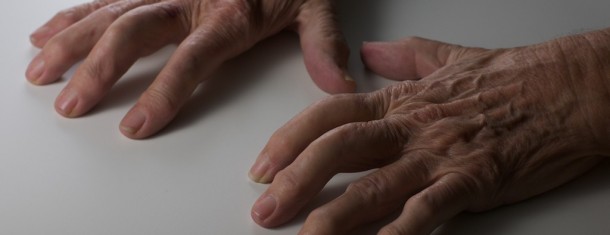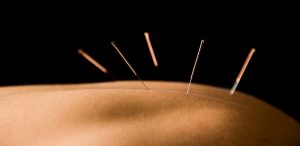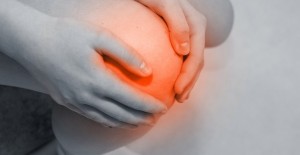

Update January 7, 2015: Over the past 3 years I have introduced new treatment options for arthritis into my practice. Above all else, prolozone injections and ozone therapy have made the biggest difference for my patients with osteoarthritis. A prolozone injection introduces ozone gas into the affected joint space, increasing tissue oxygenation, oxygen utilization and healing. More information is available on prolozone injections here.
Osteoarthritis is a chronic degenerative condition of the joints and surrounding bone, commonly referred to simply as “arthritis”. Osteoarthritis is a very common condition, affecting 14% of adults aged 25 and older and 34% of those aged 65 and older1. The most commonly affected joints, from most to least are knees, hands, hips and feet and there is a strong association with increasing age and wear and tear on joints. Symptoms of arthritis include joint pain, stiffness, joint enlargement, pain at end of range of motion and reduced range of motion.
Arthritis Medications: NSAIDs
Non-steroidal anti-inflammatory drugs (NSAIDs) such as aspirin, ibuprofen, naproxen, arthrotec, etc. are the conventional first line treatment to help patients deal with joint pain associated with osteoarthritis. Although NSAIDs effectively reduce pain, they have some significant adverse effects. These adverse effects include digestive tract irritation and stomach bleeding2, kidney toxicity3, and most importantly in the case of osteoarthritis, accelerated joint destruction4.
Several high-quality studies5,6,7 have now shown NSAID usage to be associated with an increased rate of destruction of joints in patients with arthritis, however this association is still relatively unknown to the medical community. It is thought that the increased joint destruction is due to either excessive joint usage (due to decreased pain sensation) or a direct destructive effect of these drugs on the cartilage and bone of the affected joints. Regardless of the mechanism, worsening joint erosion is a very detrimental adverse effect since it causes actual progression of the condition that is being treated. Although pain management is important in osteoarthritis there are other, more natural treatments with similar efficacy8 and less adverse effects.
Natural Treatments For Arthritis
In osteoarthritis-induced pain there are several treatments which help to reduce joint pain and in some cases even improve the integrity of the joint and strength of surrounding bone. As a naturopathic doctor and a research-based practitioner I prefer to use treatments which have minimal adverse effects and optimal treatment efficacy. In osteoarthritis several non-drug treatments can have powerful effects including weight loss, specific exercises, acupuncture, specific herbs and supplements. Each person is unique in which joints are affected and the level of severity and for this reason treatment recommendations differ from person to person.
In my practice I have seen encouraging results with natural treatment combinations targeting weight loss, restoring muscle strength and restoring joint integrity. If you suffer from arthritis and are interested in natural treatment options you can call MacLeod Naturopathic at 902-820-2727 to book an initial consultation.
References
- Lawrence R, Felson D, Helmick C, Arnold LM, Choi H, Deyo RA, Gabriel S, Hirsch R, Hochberg MC, Hunder GG, Jordan JM, Katz JN, Kremers HM, Wolfe F; National Arthritis Data Workgroup. Estimates of the prevalence of arthritis and other rheumatic conditions in the United States. Part II. Arthritis Rheum. 2008 Jan;58(1):26-35.
- Levy M, Miller DR, Kaufman DW, Siskind V, Schwingl P, Rosenberg L, Strom B, Shapiro S. Major upper gastrointestinal tract bleeding. Relation to the use of aspirin and other nonnarcotic analgesics. Arch Intern Med. 1988 Feb;148(2):281-5.
- Ejaz P, Bhojani K, Joshi VR. NSAIDs and kidney. J Assoc Physicians India. 2004 Aug;52:632-40.
- Reijman M, Bierma-Zeinstra SM, Pols HA, Koes BW, Stricker BH, Hazes JM. Is there an association between the use of different types of nonsteroidal antiinflammatory drugs and radiologic progression of osteoarthritis? The Rotterdam Study. Arthritis Rheum. 2005 Oct;52(10):3137-42.
- Huskisson EC, Berry H, Gishen P, Jubb RW, Whitehead J. Effects of antiinflammatory drugs on the progression of osteoarthritis of the knee. LINK Study Group. Longitudinal Investigation of Nonsteroidal Antiinflammatory Drugs in Knee Osteoarthritis. J Rheumatol. 1995 Oct;22(10):1941-6.
- Buckland-Wright JC, MacFarlane DG, Lynch JA, Jasani MK. Quantitative microfocal radiography detects changes in OA knee joint space width in patients in placebo controlled trial of NSAID therapy. J Rheumatol. 1995 May;22(5):937-43.
- Rashad S, Revell P, Hemingway A, Low F, Rainsford K, Walker F. Effect of non-steroidal anti-inflammatory drugs on the course of osteoarthritis. Lancet. 1989 Sep 2;2(8662):519-22.
- Müller-Fassbender H. Double-blind clinical trial of S-adenosylmethionine versus ibuprofen in the treatment of osteoarthritis. Am J Med. 1987 Nov 20;83(5A):81-3.


